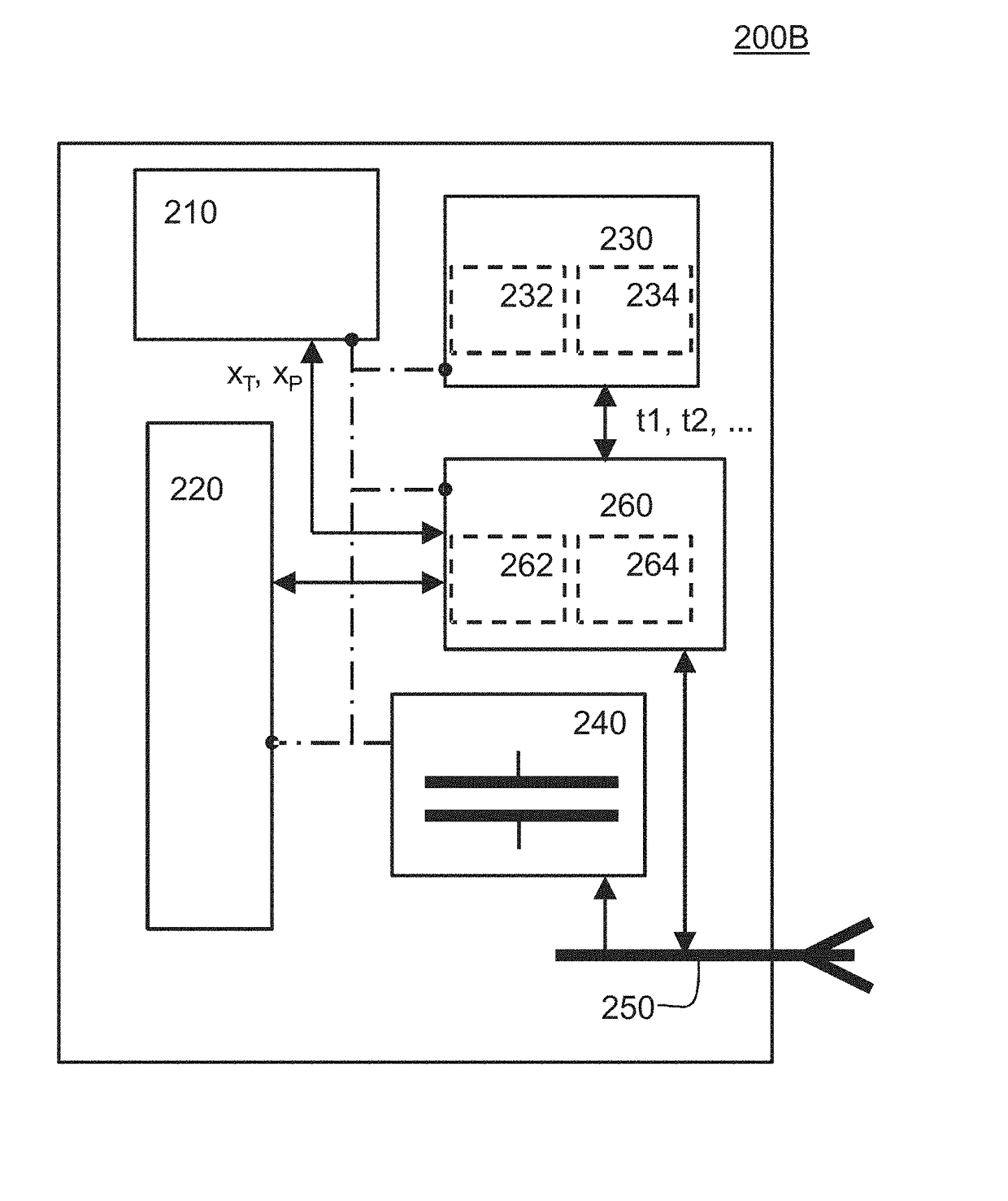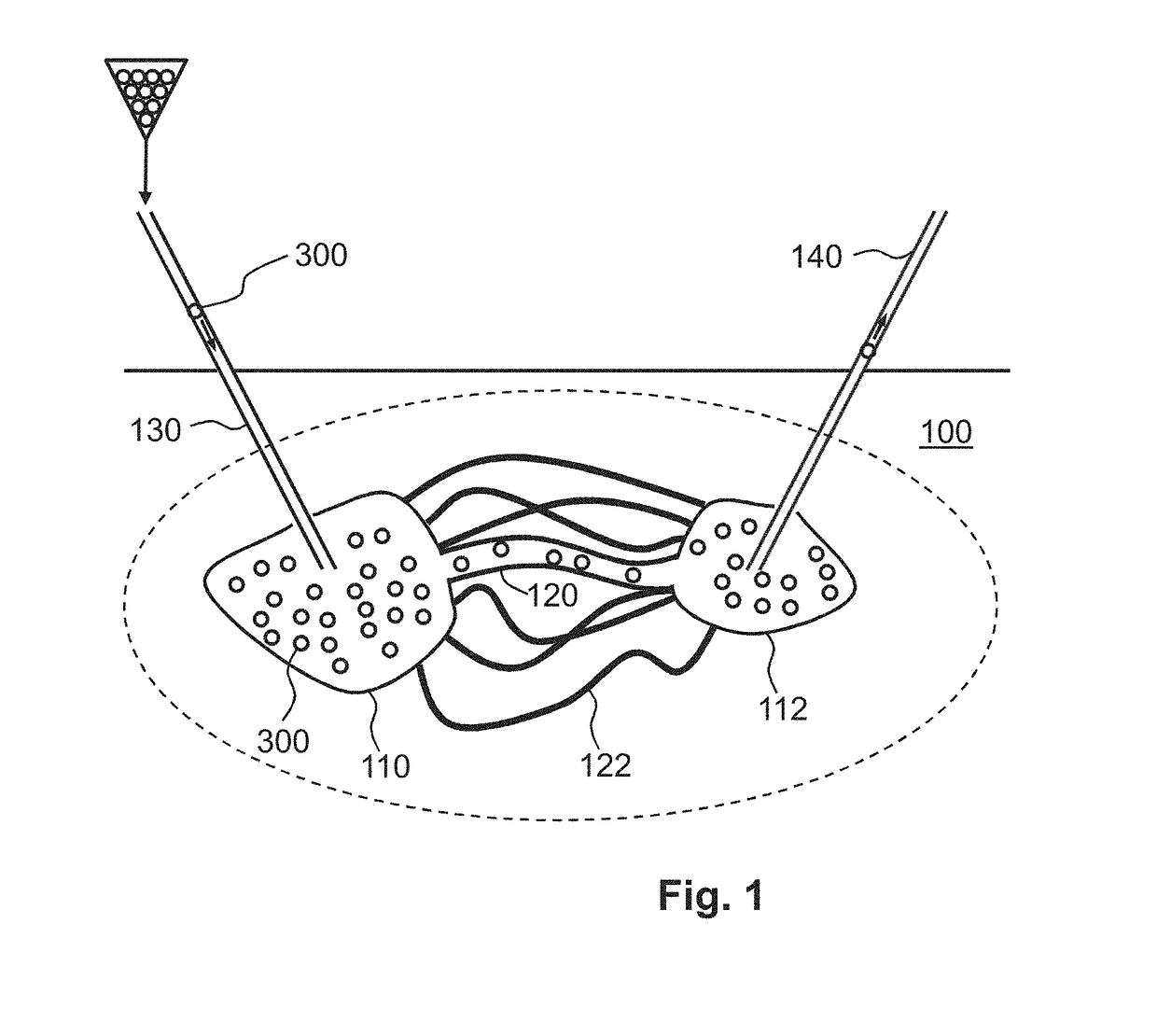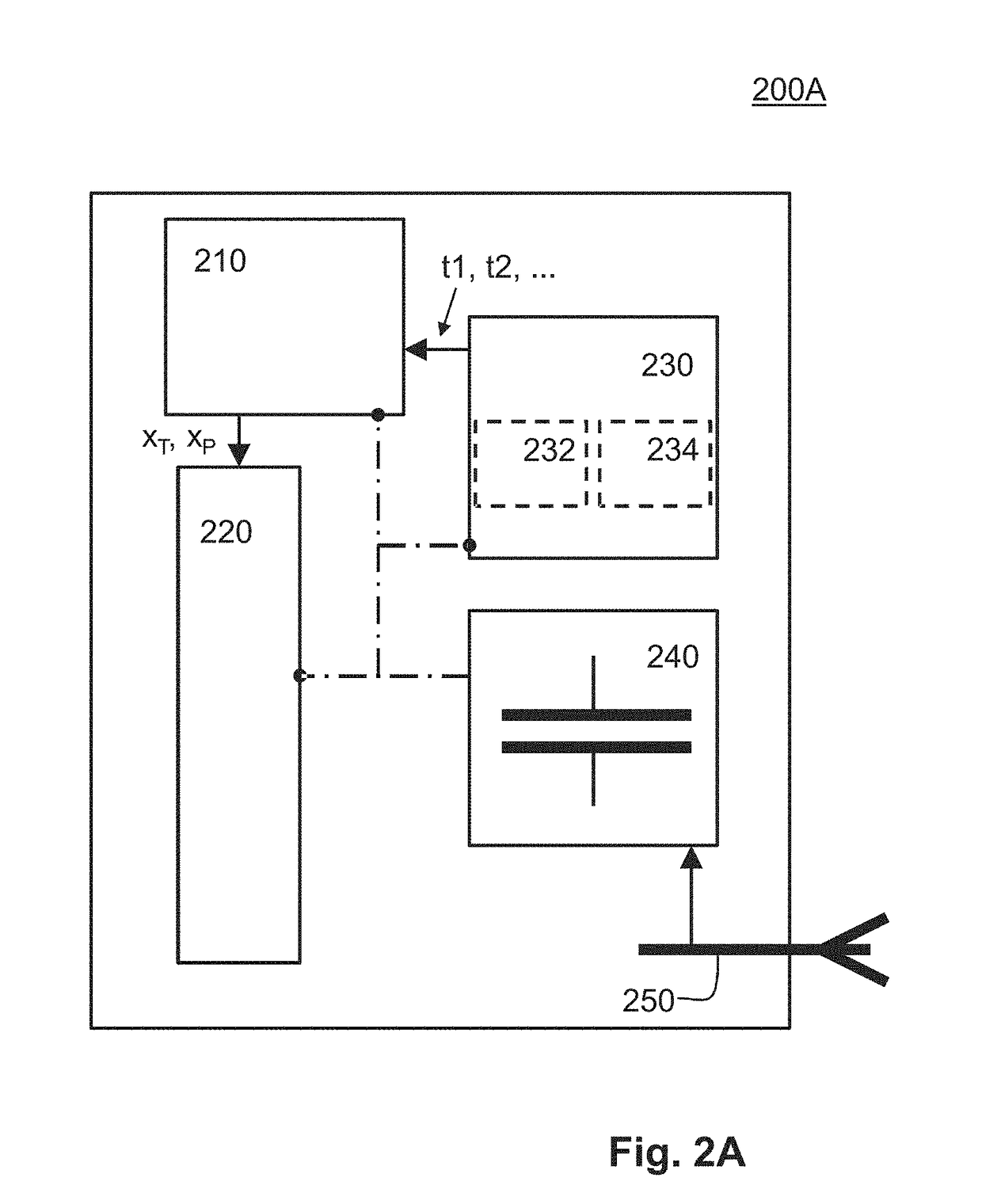Sensor system, mote and a motes-system for sensing an environmental parameter
a sensor system and environmental parameter technology, applied in the field of sensor systems, can solve the problems of quite different requirements for the sensor system, achieve the effects of minimal energy and space, improved identification of the timing of the sensed value, and low cost of the sensor system
- Summary
- Abstract
- Description
- Claims
- Application Information
AI Technical Summary
Benefits of technology
Problems solved by technology
Method used
Image
Examples
Embodiment Construction
[0037]FIG. 1 shows an environment 100 in which a mapping is required. The environment 100 shown in FIG. 1 represents an oil well 100 having a first cavity 110 which is connected to a second cavity 112 via a main passageway 120 and a plurality of smaller passageways 122. FIG. 1 further shows a plurality of motes 300 which are injected via an injection pipe 130 and which may be harvested via an extraction pipe 140. The motes 300 contain a sensor system 200A, 200B (see FIGS. 2A and 2B) which are contained in a spherical container (see FIG. 4A). Each of the motes 300 may, for example, be injected into the oil well 100 via the injection pipe 130 using a stream of hot water (not shown) which may, for example, be used to dilute some of the treacle cured oil to allow more of the treacle crude oil to be harvested. The stream of hot water typically has a temperature close to the boiling temperature of water. The motes 300 are designed to float or be buoyant in the injected liquid such that th...
PUM
| Property | Measurement | Unit |
|---|---|---|
| time duration | aaaaa | aaaaa |
| time duration | aaaaa | aaaaa |
| time duration | aaaaa | aaaaa |
Abstract
Description
Claims
Application Information
 Login to View More
Login to View More - R&D
- Intellectual Property
- Life Sciences
- Materials
- Tech Scout
- Unparalleled Data Quality
- Higher Quality Content
- 60% Fewer Hallucinations
Browse by: Latest US Patents, China's latest patents, Technical Efficacy Thesaurus, Application Domain, Technology Topic, Popular Technical Reports.
© 2025 PatSnap. All rights reserved.Legal|Privacy policy|Modern Slavery Act Transparency Statement|Sitemap|About US| Contact US: help@patsnap.com



